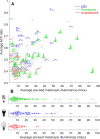Evening home lighting adversely impacts the circadian system and sleep
- PMID: 33154450
- PMCID: PMC7644684
- DOI: 10.1038/s41598-020-75622-4
Evening home lighting adversely impacts the circadian system and sleep
Abstract
The regular rise and fall of the sun resulted in the development of 24-h rhythms in virtually all organisms. In an evolutionary heartbeat, humans have taken control of their light environment with electric light. Humans are highly sensitive to light, yet most people now use light until bedtime. We evaluated the impact of modern home lighting environments in relation to sleep and individual-level light sensitivity using a new wearable spectrophotometer. We found that nearly half of homes had bright enough light to suppress melatonin by 50%, but with a wide range of individual responses (0-87% suppression for the average home). Greater evening light relative to an individual's average was associated with increased wakefulness after bedtime. Homes with energy-efficient lights had nearly double the melanopic illuminance of homes with incandescent lighting. These findings demonstrate that home lighting significantly affects sleep and the circadian system, but the impact of lighting for a specific individual in their home is highly unpredictable.
Conflict of interest statement
EMM, PV, JM, SPNC, XW, AM, and VK declare no relevant conflicts. AJKP and SWC are both investigators on projects funded by the Alertness Safety and Productivity CRC, have received research funds from Versalux and Delos, and consulted for Beacon. SWC has consulted for Versalux and Dyson.
Figures




References
-
- Evans JA, Davidson AJ. Progress in Molecular Biology and Translational Science. Amsterdam: Elsevier; 2013. pp. 283–323. - PubMed
Publication types
MeSH terms
LinkOut - more resources
Full Text Sources

